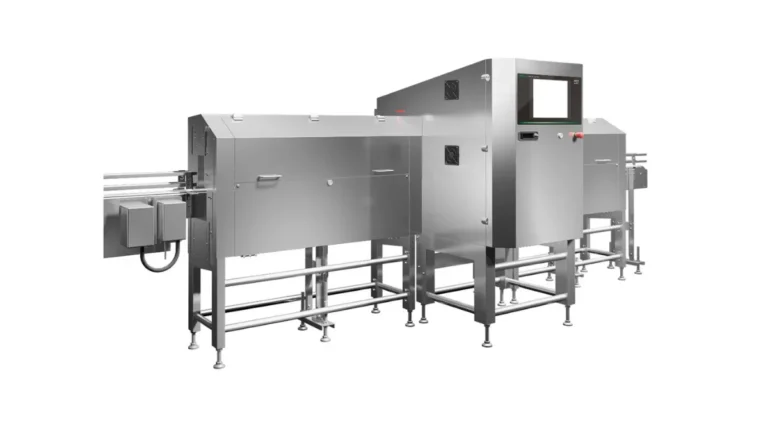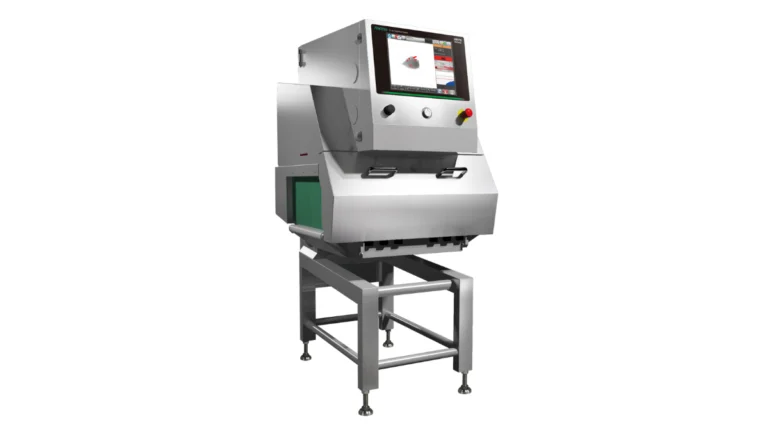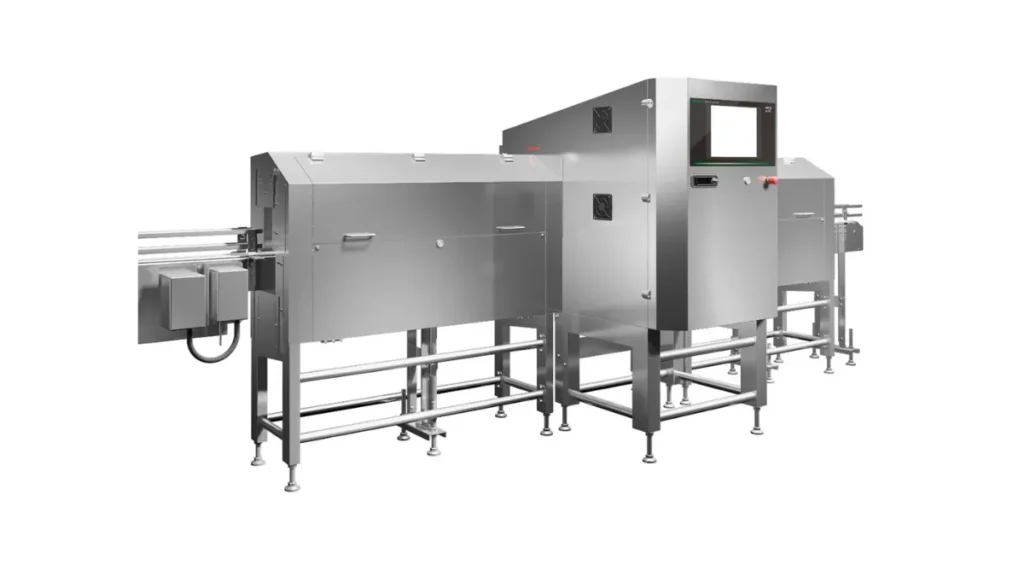Ever had one of those days where a big order comes in out of nowhere, but your factory only has a handful of workers on duty? Hiring more staff means higher costs, but pushing production too hard risks quality issues. Sometimes, you’re forced to choose between late delivery and wasted products—either way, you lose.
As labor costs continue to rise while production capacity stays the same, many food manufacturers are beginning to ask the tough question:
Is it time to bring in machines to help?
Manual labor does offer flexibility and lower upfront costs, making it a popular choice for small and medium-sized food factories. But as the business grows, the challenges around efficiency and unit cost start to demand a more strategic approach.
This article takes a straightforward look at the real cost comparison between manual labor and machinery, and helps you decide which option offers better value in the long run—so you can scale your factory with confidence and efficiency.
Overview of Manual Labor in SME Food Factories
Manual labor remains at the heart of many food production operations, especially among SMEs that are just getting started or are not yet ready to invest heavily in machinery. One of the main advantages of relying on human labor is its flexibility—tasks can be adjusted based on real-time conditions. Labor costs are generally lower at the outset compared to purchasing machinery, and business owners aren’t burdened with large long-term investments like equipment depreciation or installment payments.
However, as the business starts to grow, the limitations of manual labor become more apparent. Production speed can vary from person to person, fatigue sets in quickly, and repetitive tasks are more prone to human error. This often leads to increased product waste due to inconsistent output, lack of precision, or exhaustion-related mistakes.
More importantly, there are hidden costs that many factory owners overlook. These include overtime payments when orders fall behind schedule, rising benefits as more staff are hired, training costs for new employees, and health or safety risks in production areas. If not managed carefully, these hidden costs can quietly erode profit margins over time.
For all these reasons, a growing number of SME food manufacturers have started to explore alternatives that improve production efficiency—without increasing the burden on their workforce or endlessly adding more staff to the production line.
What Is Food Processing Machinery, and Can It Replace Human Labor?
When people think of “food processing machinery,” they often imagine large, expensive equipment used only in big industrial factories. But in reality, today’s machines are increasingly designed to fit the needs of small to medium-sized factories—both in terms of size, available space, and budget. There are many types of machines available depending on your production needs. For example, slicers help ensure every piece of raw material is uniform and can significantly speed up prep time. Mixers ensure consistency in every batch, while grinders can cut down meat or nut preparation time from hours to just minutes.
In a typical food production workflow—washing, slicing, mixing, and packaging—these steps used to require multiple workers performing tasks one after another. Speed and precision varied depending on each person’s experience. But with machines like automatic slicers, one machine can do the work of two or three people per day with less fatigue and more consistent results. Mixers, on the other hand, can run continuously without breaks, dramatically cutting down total production time.
Even though machines offer high performance, that doesn’t mean they are here to “replace” human workers. In SME factories, the most effective use of machines is to support the team—not substitute it. For example, instead of needing three workers to manually process ingredients, one person can now manage the machine while also supervising quality control or assisting in other tasks. This allows small teams to take on bigger orders without overworking themselves.
In this sense, machines are not the enemy of labor—they are valuable partners that fill in the gaps where human effort falls short. They help people work better, enforce higher standards, and reduce costly mistakes that could quietly eat away at profits in the long run.
Cost Comparison: Manual Labor vs. Machinery (Table & Figures)
Many business owners view machinery as a major upfront cost—a financial burden that requires a large investment at the beginning. But when we dig deeper into unit production cost, long-term efficiency, and scalability, it becomes clear that machinery offers significant advantages—especially when compared to relying solely on manual labor.
Here’s a basic comparison between manual labor and automated machinery:
| Item | Manual Labor | Automated Machinery |
| Initial Investment | Low (monthly wages) | High (one-time purchase or installment plan) |
| Monthly Costs | 15,000–20,000 THB per worker | Minimal (electricity + basic maintenance) |
| Efficiency | Varies by worker skill and consistency | Consistent and continuous with no fatigue |
| Production Speed | Moderate (breaks, fatigue, human error) | Fast and steady (programmable and repeatable) |
| Product Consistency & Accuracy | Inconsistent across different workers | High precision and uniform across all batches |
| Risk of Errors | High, especially with repetitive tasks | Very low if properly set and maintained |
| Hidden Long-Term Costs | Overtime, benefits, sick leave, training | Depreciation and maintenance (manageable) |
| Return on Investment (ROI) | None (ongoing cost with no payoff) | 1–2 years on average, depending on usage volume |
From the table above, it’s clear that manual labor may work well for small operations or during the early stages, especially when production volume is still low. However, as demand grows and production timelines become tighter, labor costs tend to rise uncontrollably.
In contrast, machinery—while requiring upfront investment—can significantly reduce production costs over time once the break-even point is reached. Not only does it allow for consistent output, but it also helps ensure uninterrupted operations, especially when deadlines are tight or volume surges unexpectedly.
Moreover, machinery enables factory owners to plan production capacity with confidence. It reduces dependency on labor availability and minimizes quality fluctuations, making it ideal for businesses aiming to expand, take on larger orders, or enter more competitive markets.
Common Challenges SME Factories Face When Relying Solely on Human Labor
While manual labor is often the go-to solution for small and medium-sized food factories during their early stages, many businesses begin to face recurring challenges as they grow. These challenges impact efficiency, raise costs, and hinder the factory’s ability to scale. Here are the three most common problems manufacturers run into:
1. Production delays – but hiring more workers isn’t always an option
When sudden or large orders come in, relying solely on manual labor often isn’t enough to meet tight deadlines. Workers have physical limits—they need breaks, shift rotations, and are prone to fatigue. As fatigue increases, so does the risk of errors. These delays not only affect delivery schedules but may also lead to the long-term loss of key customers who expect reliability.
2. Inconsistent product quality – which affects brand credibility
Food production demands precision and consistency—whether it’s the size of ingredients, recipe ratios, or mixing time. But with human labor, results can vary from one person to another and from batch to batch. This inconsistency makes products appear unreliable and forces the factory to deal with added costs from rework or rejected goods. Over time, it chips away at the brand’s professional image.
3. Hidden costs that don’t show up in reports—but hit your budget every month
At first glance, labor may seem more affordable than machines. But in reality, there are many hidden costs that build up over time: overtime pay, employee benefits, sick leave, training for new hires, and lost productivity when key workers are unavailable. Additionally, the unpredictability of labor—like sudden resignations or difficulty finding replacements—can bring production to a halt, causing losses that are hard to quantify but very real.
Benefits of Using Machinery in SME Food Factories
Bringing machinery into a food production facility is no longer exclusive to large-scale factories. Today, there are a wide variety of machines specifically designed for SMEs—taking into account space limitations, budget constraints, and flexible production needs. For factories looking to scale up without increasing headcount, machinery has become a powerful tool that delivers impressive results across multiple areas:
1. Significantly faster production speed
Machines can perform repetitive tasks much faster and more consistently than humans. For instance, some slicers can process over 200 kilograms of raw materials per hour, whereas manual labor may only achieve 50–70 kilograms in the same timeframe. This boost in speed means more output in less time—a critical advantage in industries where time and cost are everything.
2. Reduced waste from production errors
When precision matters—such as uniform slicing or accurate ingredient mixing—machines deliver more reliable results than human hands. This reduces the risk of rejected batches or off-spec products, helping to lower material waste and maintain a consistent brand image.
3. Consistent product quality ready for market expansion
Consistency is key to building trust with customers. When every batch looks and tastes the same—whether it’s the first or the hundredth—your brand gains credibility. This opens the door to supplying major retailers, supermarkets, or even pursuing export opportunities, all of which are common goals for growing food businesses.
4. Less dependence on a large workforce
A single machine can often replace the output of 2–4 workers, depending on the task. This allows small factories to boost their capacity without hiring additional staff, reducing the risk of labor shortages and easing the workload of existing teams. Employees can then focus on tasks that require attention to detail or decision-making, rather than repetitive manual labor.
5. Easier cost and production planning
Since machines can operate on a set schedule with predictable output, it becomes much easier to calculate production timelines and unit costs accurately. This reliability gives factory owners more confidence when planning deliveries, managing inventory, or making future investments—without the monthly guesswork that often comes with a labor-only workforce.
Conclusion: So, What’s the Best Choice for SME Factories?
For SME food factory owners weighing between relying on manual labor or investing in machinery, the answer isn’t always black and white. It depends on your business goals and readiness at different stages of growth.
If your factory is still in its early phase—with a simple production line and manageable costs using manual labor—then a full machinery investment may not be immediately necessary.
However, if you’ve started noticing signs like:
“We can’t keep up with demand,”
“We can’t hire more people,”
“Product quality is inconsistent,” or
“Costs are rising but profits aren’t”—
then it may be time to seriously consider machinery.
Choosing the right machine for your factory doesn’t always require a massive investment. Many models are designed specifically for small-scale operations, taking up minimal space and proving cost-effective from the very first month.
When you look at machinery through the lens of boosting efficiency, reducing waste, and preparing for market expansion, it becomes a smart and strategic move—not just an expense.
In truth, machinery isn’t a sunk cost—it’s a returnable investment.
And in many cases, it pays for itself faster than most factory owners expect.
Talk to an Expert in Food Processing Machinery
If you’re thinking about improving your production line, increasing efficiency, cutting waste, or expanding your food business without increasing your workforce—Sripipat is here to help.
With over 30 years of experience in food processing machinery, we understand the unique challenges that small and medium-sized factories face—whether it’s limited budget, space constraints, or product-specific requirements.
Our team offers free consultations, analyzing which type of machine is truly suitable for your product and production volume. No generic sales pitch—just the right solution for your needs.
✔️ Want to know which machine is the best fit for your factory?
✔️ Want to plan for the fastest return on investment?
✔️ Or just need advice before making a decision?
Contact the Sripipat team today and start transforming your production line to become faster, more cost-effective, and ready to scale.
📞 Call us: 02-331-9103-6
📩 Connect via LINE: @spponline
🌐 Learn more about our machines at: https://v2.sripipat.co.th








